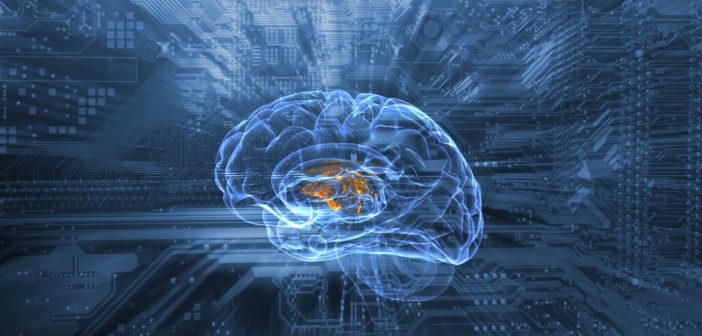Artificial Intelligence (AI) has been a mainstay of science fiction novels for decades, but without any fanfare or alien invasion, it has steadily crept into our everyday lives, transforming the way information is used and services are provided.
It almost seems mundane now; music apps choose our playlists for us based on our historical preferences, our phones have become mini personal assistants, and even our thermostats learn our behaviour. One by one, aspects of life are being managed by software that learns, predicts and adapts from a dataset of previous outcomes.
When a process is managed by AI, what becomes noticeable to the user is how much more efficient (hopefully) the experience is. Accurate decisions are made without deliberation, manual input disappears, timescales shorten significantly. These factors have already shown their enormous potential in consumer markets, where datasets are huge and requirements are simple. More and more, AI and ML (machine learning) are starting to make waves in manufacturing industries, where available datasets are far smaller and processes can be much more complex. But how can this benefit sustainability?
AI and ML are crucial to the increased autonomy of industrial manufacturing, and the resulting efficiency gains, as processes become autonomised through AI, can reduce costs and emissions associated with energy, materials, supply chain management, to name just a few. These technologies also enable manufacturers to become agile and responsive, overcoming the hurdle of “We’ve always done it that way”, by allowing algorithms to lead the way forward.
Collaborating with the right solution provider
Implementing these technologies within manufacturing processes requires a fundamental understanding of manufacturing in harmony with cutting-edge software capabilities capable of putting data to work in more useful and efficient ways, and these are areas where Hexagon has great expertise and available solutions.
At the product design stage, AI technology can optimise the design to maximise strength while reducing materials consumption and, consequently, weight. This has particular value in additive manufacturing processes, where complex geometries only possible with this technique can create incredible AI-generated structures unimaginable to human designers.
Further along the production process, AI and ML can be leveraged through digital simulations which offer the opportunity to further optimise a design, run tests against near-real world conditions and can also be used to simulate new features on existing products. This technology can massively reduce the time required to produce and test prototypes. AI-enabled systems can then assist demand forecasting and supply chain management, reducing inventory and the associated logistics emissions and costs. In the wider Hexagon family, AI is being put to work enabling sensors and software to come together and make autonomous mobility widespread in the near future. This will become an additional link in the autonomised manufacturing process as low carbon autonomous vehicles fulfil the needs of the supply chain.
Hexagon also has significant capabilities within metrology, an essential component to quality assurance processes. This is another area where AI can make systems and measuring tools do more in shorter timeframes, using image recognition to automate inspection and fault detection, with smart technology able to instantly correct production lines accordingly. Improvements to product quality and reduction of scrappage levels benefit consumers and lessen the quantity of waste, ensuring a more sustainable process.
Lifecycle management
Going beyond manufacturing into the lifecycle of a product, predictive maintenance utilising AI/ML can further improve operational efficiencies, using data to determine maintenance rather than rigid schedules. Enhanced capabilities such as these keep production lines running efficiently, reduce spare part inventories and also provide significant benefits towards safety.
Human error is a major cause of industrial accidents and while it can never be fully eradicated, implementation of more AI-governed autonomous processes will help to reduce incidences and the severity of outcomes for both people and the planet.
Merging worlds
As computer power becomes greater and more portable, we are starting to see more applications for augmented reality, which fuses digital and physical environments using software that is designed to be context-aware to superimpose data on a real-world view. Hexagon’s CFD capabilities have demonstrated how AR can be used to visualise airflow from HVAC systems to optimise their positioning, ensuring energy wastage is minimised. When combined with other AI-powered systems to manage energy use and demand optimisation from lighting and heating within the built environment, we can really start to imagine significant reduction of consumption and emissions thanks to smart technology.
In addition to demand optimisation, even the supply side can be optimised with AI software managing the supply of renewable energy based on AI predictions of weather patterns, boosting efficiency and cutting carbon emissions simultaneously.
Conclusion
With many regions of the world contending with a rapidly ageing population, AI and ML technology can help bridge the skills gap that will continue to impact manufacturing industries for the foreseeable future. Together they can reduce the requirement for expertise and democratise access to technology.
The future will not be a place where machines do all the work and humans laze around. We need to learn to collaborate with machines and find a balance where human insight complements the mathematical graft of AI software. By putting data to work more innovatively and efficiently, Hexagon is paving the way for a more sustainable future for manufacturing.
Putting data to work is also a key theme of our upcoming event, HxGN LIVE Global 2022 (click to read more and register). Explore, discover and learn at the Future of Manufacturing Summit at #HxGNLIVEGlobal Hear from experts in AI and ML, network with industry leaders, take home ideas that will inspire your organisation and experience the #autonomousfuture! #technology #digitalisation
















